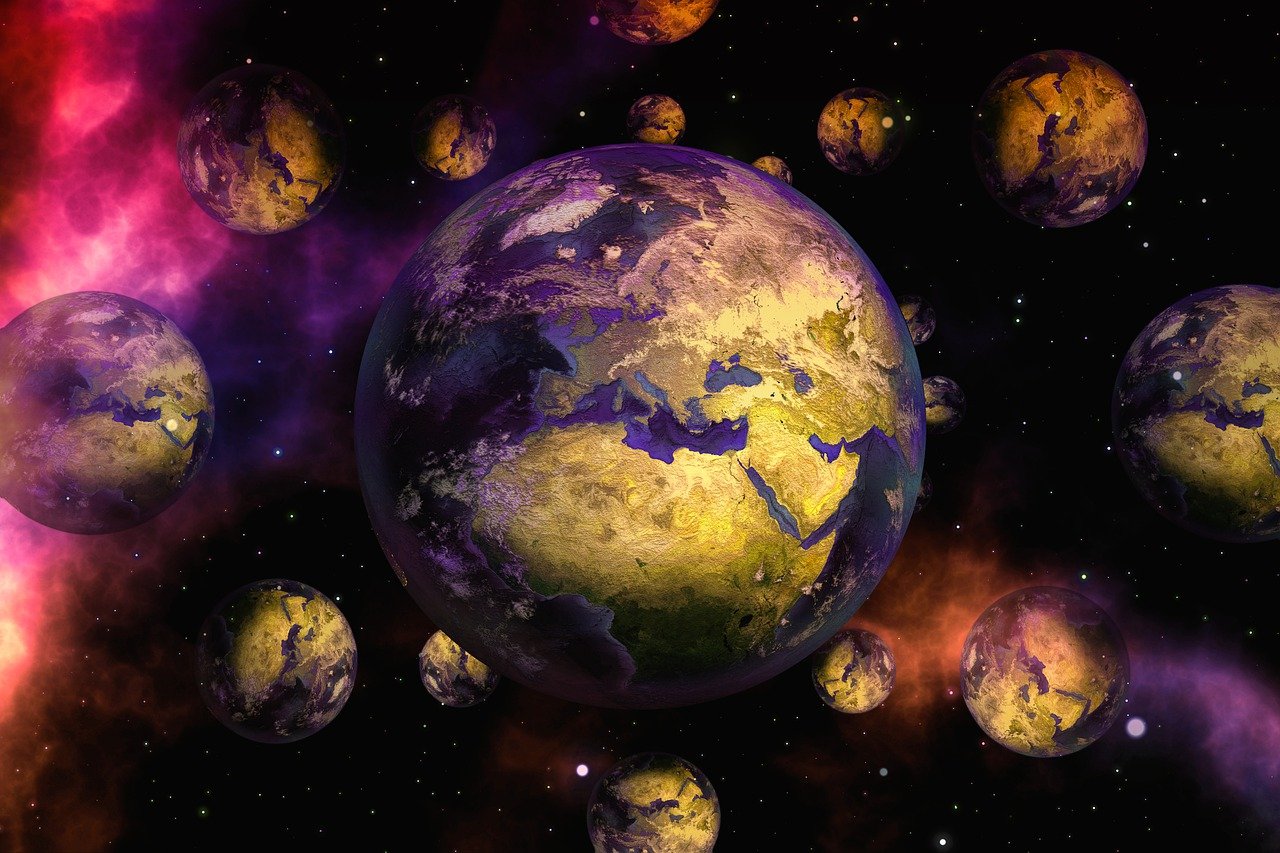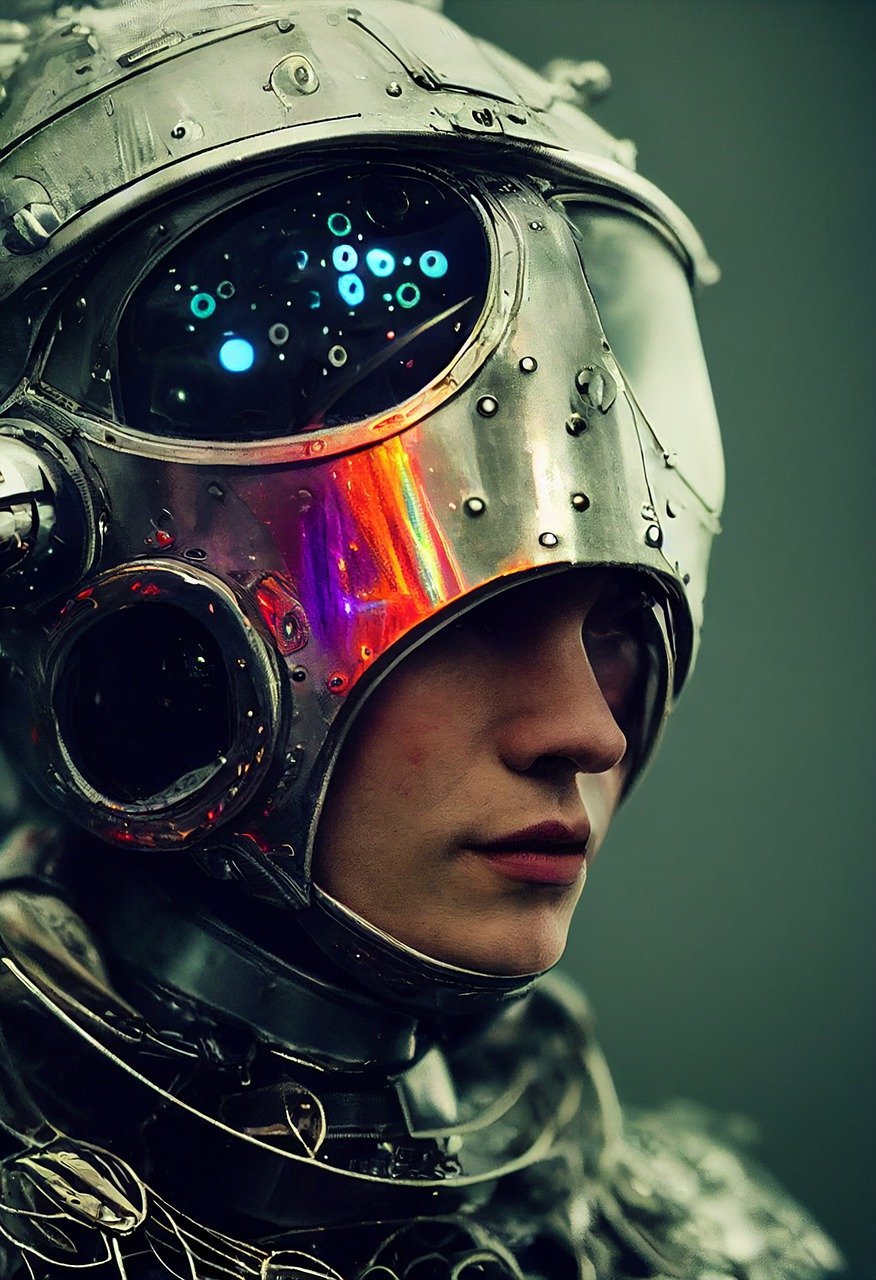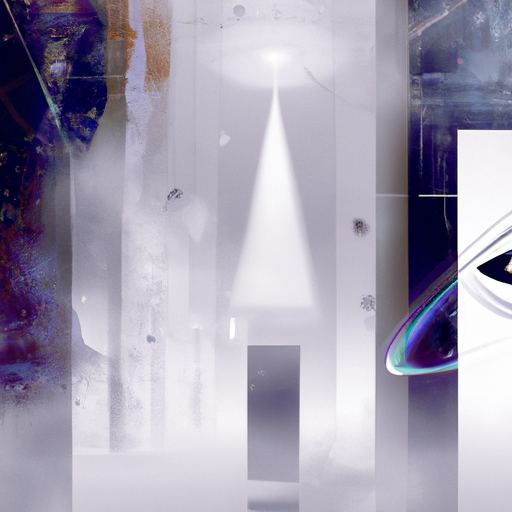Have you ever wondered if there are alternate versions of yourself living in parallel universes? The concept of the multiverse theory has fascinated scientists and philosophers alike, sparking endless debates and explorations. This theory proposes that our universe is just one of many, each existing simultaneously, with different laws of physics and possibilities. If true, the multiverse theory would open up a world of infinite possibilities and challenge our perception of reality. In this article, we will take a closer look at the multiverse theory and delve into the tantalizing possibility that our universe is not alone.

What is the Multiverse Theory?
Definition
The Multiverse Theory proposes that our universe may be just one of many universes that exist within a vast and complex structure known as the multiverse. According to this theory, these parallel universes, also referred to as “alternate realities” or “other dimensions,” may have different laws of physics, constants, and even different forms of life. Essentially, the Multiverse Theory challenges the notion that our universe is the only one that exists, suggesting that there could be an infinite number of universes coexisting alongside ours.
Origin
The concept of a multiverse has been explored and contemplated by scientists, philosophers, and thinkers for centuries. However, it was in the 20th century that the idea gained traction and began to be seriously considered within the realms of theoretical physics. Pioneers of the Multiverse Theory, such as Hugh Everett III and Max Tegmark, laid the groundwork for this fascinating concept. Drawing upon principles from quantum mechanics, cosmology, and string theory, they posited that the existence of a multiverse could help explain some of the fundamental mysteries of the universe.
Basic Idea
The basic idea behind the Multiverse Theory is that the universe we observe is just one of countless others, each with its own unique characteristics. While our universe may seem vast and expansive to us, it is merely a tiny fraction of the entire multiverse. These parallel universes may have different physical laws, dimensions, and even different versions of ourselves. The Multiverse Theory allows for the possibility that there are multiple realities, each with its own set of possibilities and outcomes. It opens up a world of potential and challenges our understanding of what reality truly means.
Types of Multiverse
Parallel Universes
Parallel universes, also known as “level one” multiverses, are perhaps the most well-known and comprehensible form of the multiverse. In this type of multiverse, multiple universes exist alongside ours, occupying the same space, but remaining separate and distinct. These parallel universes may share similar physical laws but have slight variations, resulting in different outcomes and realities. Think of it as a multitude of different paths that reality could have taken, with each universe representing a different outcome or possibility.
Bubble Universes
Bubble universes, also referred to as “inflationary multiverse,” stem from the concept of cosmic inflation within the framework of the Big Bang theory. It suggests that our universe is just one “bubble” within a larger cosmic foam of expanding universes. Each of these bubble universes is like a separate bubble in a bubble bath, expanding and creating its own set of physical laws and constants. The infinite expanse of bubble universes gives rise to an almost unimaginable array of possible realities, all existing independently within the multiverse.
Membrane Multiverse
The membrane, or “brane,” multiverse theory is derived from the principles of string theory. According to this concept, our universe exists on a three-dimensional brane, while other universes exist on separate branes, floating in a higher-dimensional space. These branes can occasionally collide, causing cataclysmic events known as “brane collision,” which could potentially result in the creation of new universes. The membrane multiverse offers an intriguing explanation for the existence of parallel universes, with each brane representing a unique reality with its own set of physical laws.
Quantum Multiverse
The quantum multiverse theory draws its inspiration from the peculiar nature of quantum mechanics. According to this theory, every quantum event gives rise to multiple possible outcomes, each creating a separate universe. This implies that every decision, every quantum interaction, and even every subatomic particle’s behavior could lead to the creation of a new universe. The quantum multiverse theory suggests that there is an infinite number of parallel universes, each branching out from the countless possibilities offered by the quantum realm.
Support and Evidence
Inflation Theory
The concept of inflationary cosmology, proposed by physicist Alan Guth, provides one of the key pieces of evidence supporting the existence of a multiverse. According to the inflation theory, the universe underwent an exponential expansion in the moments following the Big Bang. This rapid expansion would have created regions with different physical properties, allowing for the formation of separate bubble universes within the larger multiverse. The observation of cosmic microwave background radiation, as well as the distribution of matter in the universe, aligns with the predictions of inflation theory, lending credibility to the concept of a multiverse.
Cosmic Microwave Background Radiation
One of the most compelling pieces of evidence for the multiverse comes from the observation of cosmic microwave background radiation (CMBR). CMBR is the faint radiation that permeates the entire universe, leftover from the Big Bang. The slight temperature fluctuations and patterns in the CMBR suggest that the universe underwent a period of cosmic inflation, supporting the idea of a multiverse. These variations in the CMBR could be explained by the existence of other universes that underwent different inflationary phases, resulting in variations in temperature and density across the multiverse.
String Theory
String theory, a candidate for a theory of everything, provides a framework that supports the idea of a multiverse. According to string theory, the fabric of reality is composed of tiny, vibrating strings rather than point-like particles. The theory suggests the existence of extra dimensions beyond the familiar three spatial dimensions we experience. These extra dimensions could house other universes, providing a possible explanation for the existence of a multiverse. While string theory is still being explored and lacks empirical confirmation, it offers a tantalizing avenue for understanding the underlying structure of the multiverse.
Black Holes
Black holes, the mysterious gravitational behemoths of the universe, have also been linked to the concept of a multiverse. The ongoing study of black holes and their implications within the framework of general relativity and quantum mechanics has revealed fascinating connections to the multiverse theory. The extreme conditions near the event horizon of a black hole, combined with the principles of quantum mechanics, have led to the hypothesis that black holes could serve as gateways to other universes or even spawn new universes. While this idea remains largely speculative, it highlights the intricate relationship between black holes and the multiverse.
Critics and Challenges
Occam’s Razor
One of the primary criticisms of the multiverse theory stems from Occam’s Razor, a principle in philosophy that favors the simplest explanation. Critics argue that invoking the existence of an infinite number of universes may be unnecessarily complex. They contend that it is more reasonable to assume that our universe is unique and that any observed phenomena can be explained within the boundaries of our known physical laws. However, proponents of the multiverse theory counter that Occam’s Razor cannot be applied when it comes to explaining the fundamental mysteries of the universe and that a more comprehensive framework is needed.
Testability and Observability
Another challenge faced by the multiverse theory lies in its testability and observability. As of now, the multiverse remains purely theoretical, with no direct empirical evidence to confirm its existence. Critics argue that if a theory cannot be tested or observed, it falls outside the realm of scientific inquiry. However, proponents of the multiverse theory point out that similar concepts, such as dark matter and dark energy, were once considered speculative but are now widely accepted in the scientific community. They argue that advancements in technology and theoretical frameworks may eventually provide ways to detect and confirm the existence of the multiverse.
Unprovable Hypotheses
The multiverse theory also faces criticism due to its reliance on unprovable hypotheses. Since the multiverse cannot be directly observed or tested, some argue that it falls into the realm of speculation rather than scientific inquiry. Critics contend that the lack of empirical evidence makes the multiverse theory less viable and undermines its credibility. However, proponents argue that the multiverse theory is based on logical extrapolations from established theories such as inflation and string theory. They assert that while direct proof may be elusive, the multiverse provides a compelling framework that offers explanatory power and potential solutions to some of the universe’s deepest mysteries.
Scientific Method
Critics of the multiverse theory often point to its departure from the traditional scientific method. They argue that the concept of a multiverse falls outside the boundaries of empiricism, which relies on observable and repeatable evidence. It is difficult to devise experiments that could conclusively confirm or refute the existence of a multiverse. However, proponents of the multiverse theory contend that scientific inquiry should not be limited by rigid adherence to a specific method. They argue that the multiverse theory is the result of rigorous mathematical and theoretical exploration, offering plausible explanations for perplexing phenomena that cannot be accounted for within the confines of traditional scientific frameworks.

Implications and Consequences
Existential Questions
The multiverse theory raises profound existential questions about the nature of existence and our place in the universe. If multiple universes exist, each with its own set of physical laws and constants, it suggests that reality is far more complex and diverse than we can ever comprehend. The multiverse challenges our notions of uniqueness and highlights the vastness of possibilities that lie beyond our universe. It prompts questions about the purpose of our existence, our interconnectedness with other realities, and the greater meaning of life.
Parallel Lives and Alternate Realities
One of the intriguing implications of the multiverse theory is the concept of parallel lives and alternate realities. If there are infinite universes, each branching off from different decisions and possibilities, it suggests that there are versions of ourselves living out different lives in alternate realities. This idea sparks the imagination and invites contemplation about the paths not taken and the existence of other versions of ourselves in different circumstances. It expands the scope of our understanding and challenges the idea of a singular and fixed identity.
Cosmic Landscape
The existence of a multiverse also leads to the concept of a cosmic landscape, a vast tapestry of interconnected universes. Each universe within the multiverse represents a unique configuration of physical laws, constants, and potential outcomes. The cosmic landscape encompasses the staggering array of possibilities and variations that exist beyond our universe. It highlights the intricate interconnectedness of reality and invites exploration into the vast unknown regions of the multiverse. The cosmic landscape invites contemplation about the awe-inspiring diversity and complexity inherent in the fabric of the universe.
Ultimate Fate of the Universe
The multiverse theory also has implications for the ultimate fate of the universe. If there are multiple universes with different physical laws and constants, it suggests that each universe may undergo its own distinct fate. While our universe may face a heat death or continue to expand indefinitely, other universes within the multiverse may experience different outcomes, such as collapsing into a singularity or experiencing a Big Crunch. The multiverse theory offers a new perspective on the fate of the universe, highlighting the possibility of diverse cosmic destinies and reinforcing the idea that our universe is just one thread within the vast tapestry of the multiverse.
Philosophical and Religious Debate
Theological Implications
The concept of a multiverse has significant theological implications, particularly in relation to the idea of a divine creator. The existence of a multiverse challenges traditional religious interpretations that assert a single, unique creation event. It raises questions about the nature of God and the relationship between the divine and the multiverse. Some religious perspectives embrace the possibility of a multiverse, suggesting that it reflects the infinite creativity and expansive nature of a divine being. Others, however, view the multiverse theory as incompatible with their religious beliefs, as it challenges the notion of a singular and exclusive divine creation.
Parallelism in Religious Beliefs
Interestingly, the multiverse theory also finds parallels in various religious beliefs and mythologies. Concepts such as parallel dimensions, alternate realities, and realms beyond our perception have been expressed in different religious and spiritual traditions throughout history. The multiverse theory offers a bridge for exploring the intersections between scientific and religious perspectives. It has the potential to foster dialogue and bridge gaps between these seemingly disparate realms of knowledge, prompting a deeper exploration of the mysteries of existence.
Intersection of Science and Theology
The multiverse theory provides an opportunity for a deeper exploration of the relationship between science and theology. Historically, these two domains have often been considered separate and sometimes even in conflict. However, the multiverse theory invites a more nuanced and interdisciplinary approach. It offers a framework where scientists can engage with the profound questions of existence, purpose, and the nature of reality, while theologians can reflect upon the implications of scientific discoveries and explore new avenues of understanding. The intersection of science and theology within the context of the multiverse theory opens up possibilities for a richer and more comprehensive exploration of our universe.
Moral and Ethical Considerations
The multiverse theory also raises moral and ethical considerations. If there are infinite possibilities and outcomes within the multiverse, it prompts reflection upon the consequences of our actions and decisions. The realization that our choices may lead to different realities and versions of ourselves underscores the weight and responsibility of our moral decisions. It challenges the notion of a fixed and predetermined destiny and encourages us to consider the potential impact our choices may have on ourselves and other versions of reality.

Popular Culture References
Movies and TV Shows
The concept of a multiverse has captivated popular culture and has been featured prominently in various movies and TV shows. Films such as “The Matrix,” “Inception,” and the Marvel Cinematic Universe’s “Doctor Strange” explore the idea of multiple dimensions and parallel realities. TV series such as “Stranger Things” and “Fringe” revolve around parallel universes and alternate realities. These pop culture references serve as a vehicle for popularizing the concept of a multiverse, sparking the imagination and fostering interest in the topic.
Books and Literature
Multiverse theories have found their way into many works of literature, both fiction and non-fiction. Books such as “Dark Matter” by Blake Crouch, “The Long Earth” by Terry Pratchett and Stephen Baxter, and “The End of Eternity” by Isaac Asimov delve into the concept of multiple universes and the implications for humanity. Non-fiction works like “The Hidden Reality” by Brian Greene and “Many Worlds in One” by Alex Vilenkin provide scientifically grounded explorations of the multiverse theory. These literary works contribute to the dissemination of knowledge and foster a broader understanding and appreciation of the multiverse.
Art and Music
The multiverse theory has also inspired artists and musicians to explore its themes in their creative works. Paintings, sculptures, and installations have depicted the notion of parallel universes and the cosmic landscape. Musical compositions, such as Gustav Holst’s “The Planets” and Philip Glass’s “Einstein on the Beach,” evoke the vastness and complexity of the multiverse. This creative expression serves to merge the realms of science and art, providing alternative perspectives and interpretations of the multiverse theory.
Video Games
The concept of the multiverse has also been embraced by the world of video games. Games like “Bioshock Infinite” and the “Mortal Kombat” series incorporate the concept of alternate realities and branching timelines. The popular game “Portal” explores the idea of parallel dimensions and alternate versions of reality. These video games provide interactive experiences that allow players to explore the possibilities and consequences of different universes, further popularizing the multiverse theory among gamers.
Future Exploration and Scientific Progress
Large Hadron Collider
One promising avenue for future exploration of the multiverse theory lies in the capabilities of the Large Hadron Collider (LHC). The LHC, located at CERN, is the most powerful particle accelerator in the world. Its high-energy collisions could potentially yield evidence of extra dimensions and hidden branes, providing insights into the existence of parallel universes within the multiverse. Continued experimentation and analysis at the LHC could bring us closer to validating the multiverse theory and expanding our understanding of the cosmos.
James Webb Space Telescope
The launch of the James Webb Space Telescope (JWST) in the near future holds great potential for discovering further evidence of the multiverse. The JWST, with its advanced imaging capabilities and greater sensitivity, will enable scientists to observe distant galaxies and study the cosmic microwave background radiation in unprecedented detail. This increased resolution could potentially uncover subtle patterns and variations in the CMBR, providing valuable insights into the existence of other universes within the multiverse.
Gravitational Waves
The detection and study of gravitational waves also offer avenues for exploring the multiverse theory. Gravitational waves are ripples in the fabric of spacetime caused by the acceleration of massive objects. By detecting and analyzing these waves, scientists can gain insights into the dynamics and nature of the universe. Continued advancements in gravitational wave detectors, such as the Laser Interferometer Gravitational-Wave Observatory (LIGO), could potentially reveal signatures of other universes or shed light on the interconnectivity and interactions between different parts of the multiverse.
Astrobiology
The field of astrobiology, the study of life beyond Earth, holds potential connections to the multiverse theory. If the multiverse is composed of countless varied universes, each with its own unique set of conditions, the possibility of extraterrestrial life existing within other universes becomes an intriguing prospect. Astrobiology aims to explore the potential for life across different environments and conditions. By broadening our understanding of possible habitable zones and life-supporting conditions within the multiverse, astrobiology may uncover new insights into the existence and diversity of life beyond our universe.

Alternative Theories
Simulation Hypothesis
The simulation hypothesis proposes that our universe and the multiverse as a whole may be the result of an advanced civilization running a highly advanced simulation or computer program. This theory posits that what we perceive as reality could be nothing more than a lifelike simulation designed by a higher intelligence. It challenges our perception of what is real and raises questions about the nature of existence. While the simulation hypothesis is highly speculative and lacks concrete evidence, it offers an alternative perspective on the origin and nature of the multiverse.
Holographic Principle
The holographic principle is a theoretical concept that suggests that all the information contained within a three-dimensional volume can be represented on a two-dimensional surface. This principle draws parallels between holography and the nature of spacetime in the multiverse. According to this theory, our three-dimensional universe could be a projection or illusion, with all the fundamental information encoded on a two-dimensional “screen.” The holographic principle challenges our conventional understanding of space, time, and reality, providing an alternative lens through which to view the multiverse.
Echo Multiverse
The echo multiverse theory, also known as the “recycling universe” theory, proposes that the universe goes through cycles of expansion and contraction, perpetually repeating itself. Each cycle begins with a Big Bang, followed by a period of expansion, and concludes with a contraction or Big Crunch, leading to the birth of a new universe. The echo multiverse theory suggests that these cycles of expansion and contraction have occurred and will continue to occur infinitely, creating an eternal multiverse of repeated universes. This theory provides a unique perspective on the cyclic nature of existence within the multiverse.
Brane Collision Theory
The brane collision theory builds upon the principles of string theory and proposes that branes, representing different universes, can collide and interact with one another. These collisions could give rise to a new universe, either through a cataclysmic event or as a result of energy transfer between the branes. The brane collision theory offers an alternative mechanism for the creation of new universes within the multiverse. It postulates that interactions and collisions between branes could be responsible for the generation of different realities with unique physical laws and characteristics.
Conclusion
The Multiverse Theory opens up a breathtaking exploration of our existence and the nature of reality. It challenges our conventional understanding of the universe and invites us to contemplate the existence of parallel realities, alternate versions of ourselves, and the infinite possibilities that lie beyond our universe. While the multiverse theory remains speculative and lacking direct empirical evidence, it draws support from inflation theory, cosmic microwave background radiation, string theory, and the mysterious nature of black holes.
Critics highlight challenges such as Occam’s Razor, limited testability and observability, reliance on unprovable hypotheses, and departure from the traditional scientific method. However, proponents argue that the complexities of the universe demand a more comprehensive framework and that the multiverse theory provides compelling explanations for phenomena that cannot be accounted for within our current understanding.
The multiverse theory has profound implications for our existence and raises existential questions about the purpose and interconnectedness of life. It finds intersections with various religious beliefs, prompting theological reflections and inviting dialogue between science and theology. The multiverse theory also inspires artists, musicians, and writers, who explore its themes in movies, books, art, music, and video games, fostering popular interest and engagement.
Future exploration and scientific progress, such as the capabilities of the Large Hadron Collider and the James Webb Space Telescope, hold the potential to provide further evidence of the multiverse. Continued advancements in gravitational wave detection and the field of astrobiology may also shed light on the existence and interconnectedness of other universes within the multiverse.
Alternative theories, including the simulation hypothesis, holographic principle, echo multiverse, and brane collision theory, provide fascinating avenues for contemplating the origin and nature of the multiverse, offering alternative perspectives on our existence.
In conclusion, while the multiverse theory remains a subject of speculation and ongoing scientific inquiry, its exploration provides a captivating journey into the mysteries of the universe. The implications for humanity, the ethical considerations, and the intersections with philosophy, religion, and popular culture invite us to expand our understanding and embrace the vastness and complexity of the multiverse.